Volvo XC40 Vs Lexus UX Comparison

Congratulations, you got that promotion at work. It’s time for a fancier new car—but not too fancy.
That’s the space where this comparison’s pair of pint-sized premium SUVs sit. Both the Volvo XC40 and Lexus UX are a little more lux than the average car, but they don’t shout about it. They don’t take up an obscene amount of the road, either. They’re modest, like the outfits in Succession (but definitely not the actual cars).
Even if they compete in the same segment, and both came in for updates for 2023, there’s a lot of clear air between these two. One is all upright and boxy; the other, essentially a hatchback. You can choose between a hybrid and parsimony, or a turbo and performance. Managing editor Mike Schlee and I spent a week with both to find out which we’d spend that hypothetical bonus on.
Get a Quote on a New Volvo XC40 or Lexus UXInterior and Cargo Space
Volvo XC40: The XC40’s cabin echoes the look of the exterior, with plenty of straight lines and rounded, blocky forms. It’s an easy space to get comfortable in, since all the controls are centralized in the small group of physical buttons above the center console, or on the touchscreen. We still love the little integrated trash receptacle, too. The interior design is clean, and the materials are generally good, though I’m not a fan of how the afore-mentioned controls just protrude out, with obvious cutlines in the plastic. We’re not in love with the plain black color scheme, either. At least there’s some contrast stitching to lift the mood, and we like the mix of textile and suede for the seats.
Neither Schlee nor I can fault the XC40’s driving position. It’s blessed with super-comfortable seats, and the view out is good, too. We appreciate the the longer lower cushion, which should help taller drivers feel properly supported on longer drives. The Volvo has around two extra inches of headroom up front, as well.
That height advantage over the Lexus continues in the back seats. Neither small SUV has a whole lot of natural light back there—rising beltlines being what they are—but the Volvo has the edge, plus more comfortable seats. Beyond that, there’s a useful 36.1 inches (917 millimeters) of rear legroom, a full 3.0 inches (76 mm) more than in the Lexus.
On paper, the Volvo has the smaller cargo area, with an official measurement of 16.0 cubic feet (453 liters). It can’t match the outright width of the fore-most portion of the Lexus’ cargo area. However, the XC40 cargo cover is higher, so taller items can be tucked away from prying eyes. Fold the seats and the space swells to a very useful 57.5 cubic feet.
Lexus UX: One notices the dramatic change in ambiance the moment they drop into the Lexus’ driver’s seat. And we do mean drop; this little soft-roader sits far closer to terra firma, with a driving position that’s pure car. This is an altogether more expressive cabin. The Lexus’ dashboard swoops and curves, with a dramatic arch for its instrument cluster complete with the “Lexus horns.” Mostly, that’s fine by us: the key controls are just as easy to use here as they are in the Volvo. Fit and finish is typically Lexus up front, with smooth finishes and tight shutlines.
It’s up front where the Lexus puts in its strongest challenge to the icy Swede. While the Nuluxe-finished seats (in “Acorn”) lack the under-thigh support, they’re a good mix of supportive and comfortable, and as mentioned, are positioned nice and low. Who doesn’t like ventilated seats when the early summer weather shows up, either? Sure, the UX offers less headroom, but it doesn’t bother us. Folks six-foot and over may have a different impression.
It’s the back row that lets the Lexus side down. For starters, it’s tight: tight on headroom (36.3 inches / 922 mm), very tight on legroom (33.1 inches / 841 mm), and even the door opening is tight. The rising window line aligns with our chins. So little glass makes it hard to ignore the door panels too, which show off a significant dip in quality versus the fronts. There’s a whole lot of very un-Lexus brittle plastic.
The UX has a slight edge in storage space, scoring 17.1 cu-ft (484 L) thanks to the carve-outs aft of the wheel wells. You have to contend with a higher load deck, however, and the two-seat layout doesn’t offer as much flat space as the XC40.
Bottom Line: It’s an early move ahead for the XC40, with a more spacious and inviting interior. We’d just like it with a splash of color, please.
Volvo XC40 vs Lexus UX: Tech and Features
XC40: We’ve been talking about it a lot lately: the XC40’s Google Automotive-based infotainment system is a mixed bag. It launched to plenty of criticism, and to its credit, Volvo has worked to address some of the issues. For starters, Apple smartphone owners won’t feel iced out anymore. While the grid-like system makes it fairly easy to navigate, the small icons and even smaller text does not. And we will always dock points for any system that forces users into a touchscreen menu to adjust the climate controls. Boo-urns.
All that said, we do appreciate that we never get sucked into sub-sub-menus, and the response times are above average.
The digital instrument panel looks good, but as is the case in other Volvos, it’s barely configurable. Basically, you can have the map on, or off. There’s a wireless charging pad that, at least for us, spends more time not actually charging the phone.
With this being the absolute top trim of the gas-powered XC40 range, the rest of the tech suite impresses. The heated steering wheel gets properly toasty, and quickly. The Harman Kardon audio system is powerful and clear. There are clever touches too, like the ability to power-fold the second-row headrests from up front. This being a Volvo, the safety system is first-rate, including a natural, smooth-acting adaptive cruise control and crisp 360-degree camera.
UX: The UX has big infotainment changes this year too, as it adopts Lexus’ vastly improved operating system. Good riddance, touchpad. It’s a simple setup (and also Android-based), using a left-set main menu that should feel familiar to most folks. Crucially, climate controls remain separate, down below: point for Lexus. The native navigation is okay: provided you have an active subscription, it’ll go where you ask, but you can’t clip any instructions or else the system gets confused.
The UX doesn’t have the fully digital instrument cluster that the XC40 boasts. Its hybrid setup offers up more info more readily, however, and that should be the measuring stick. Point again, Lexus.
Our tester is a unique Canadian-market special edition (more on that later), that hews closer to the bottom of the lineup than the top. That’s a refreshing move for customers, but it does mean that the Lexus lacks some of the fancier bits found in its competitor. There’s no 360-degree camera, for instance, nor an uprated sound system. It does come with a long list of standard safety assists as part of the Lexus Safety System+ 2.5, including adaptive cruise control, lane departure alert, auto high-beams, and more. This model adds blind-spot monitoring, rain-sensing wipers, and adaptive LED headlights.
Bottom Line: The Lexus misses a handful of the tech features of the Volvo, but counters with a much more intuitive and modern infotainment system. It scores the point here.
Powertrain, Driving Feel, and Efficiency
XC40: All gas-only XC40s in North America now come with a 2.0-liter turbocharged four-cylinder mild hybrid setup. The base engine, dubbed B4, sends 194 horsepower and 221 pound-feet of torque through an eight-speed automatic transmission. Move up to the B5 as seen here and those numbers swell to 247 and 258, respectively. In America, all-wheel drive is optional on the B4 and standard on the B5; in Canada, it’s standard across the board.
It’s a solid powertrain, with useful amounts of low-end torque and a responsive transmission making for smooth in-town progress. The occasional low-speed auto ‘box jerkiness I witnessed in both the V60 and S60 is absent here. Mike points out that the start/stop system is one of the tardier ones out there however, and that can catch drivers out at red lights. Push out to the highway and the XC40 has plenty of passing power.
Those pretty 20-inch alloys come wrapped in sizeable 245-section tires, which affords the XC40 more grip than we expected. It’s a fun little box to toss around, and Volvo keeps driving settings to a minimum. You’ve got standard or “firm” steering, but there’s little difference between them. There’s good, consistent weighting, and while there’s little feedback, the wheel is accurate.
Fuel economy is reasonable, with the EPA scoring the XC40 B5 AWD at 23 mpg city, 30 mpg highway, and 26 mpg combined. (Canadian equivalents: 10.2, 7.9, and 9.2 L/100 km). That was bang-on with our week, though it’s also important to note the XC40 drinks the premium stuff.
UX: The UX has its own 2.0-liter engine as standard. There’s no turbo here, only Toyota’s familiar hybrid system. Horsepower is a low 181 hp, and Lexus doesn’t quote a torque figure. An electronic continuously variable transmission sends the power to the ground. The Lexus also features electronic on-demand all-wheel drive: only the electric motor can power the rear axle, and only when the system detects slip up front.
Does the UX feel tardier? Yes. In the city the gap is small, though; the eCVT gives it a jump off the line, augmented by instant-access electric torque. But dip into the throttle more than a quarter of its travel and the gas engine moans into life. It doesn’t so much sing as it does gargle its way to highway speeds.
But you know what? It’s hard to be bothered when you see 50-percent better fuel economy. The official figures are 41 mpg city, 38 mpg highway, and 39 mpg combined. (Canadian figures: 5.7, 6.2, 6.0 L/100 km.) We didn’t quite hit that in our week, but even still, the Lexus leads without even trying.
When the engine isn’t doing its Tom Waits karaoke act, the Lexus is a pretty smooth road trip companion. Both Schlee and I are car folks first, so the lower seating position and softly damped suspension are welcome. This is one of the least-sporty premium vehicles on the market; treat it as such, and the UX makes progress easy.
Bottom Line: The XC40 is easily the more enjoyable car to drive. But look, you didn’t move up in the company by being wasteful, right? Saving so much fuel has its own appeal. It’s just that efficiency is the only advantage the Lexus has.
Volvo XC40 vs Lexus UX: Styling
XC40: The Volvo XC40 doesn’t look so much designed as it was popped out of some industrial-sized ice cube tray somewhere North of Gothenburg. Boxy is practical, boxy is rational, but only the Swedes could make it cool, too. From the clamshell hood, the clean air intake shapes, the funky riff on the classic Volvo taillights, and the jaunty window line, the XC40 stands out. Personally, I’m not sold on the angrier headlights, borrowed from its sleek C40 sibling. But overall, and especially in this Fjord Blue and on the big 19s, the XC40 cuts a distinct profile.
UX: The UX has been with us for a few years now. Toyota says it gave the lil’ guy a facelift for 2023, but you’ll have to really squint to see it. This is the fussier design of the pair, no doubt, but I for one like the headlight design and the intricate, three-dimensional nature of the taillights. Opting for body-colored wheel arches does the UX plenty of favors, too.
It does look more like a slightly tall car than an actual SUV, however. Whether or not that’s a positive depends on your personal preferences.
Bottom Line: That’s always the summation, isn’t it? Tastes vary. Both shapes fit right in around the city, but the Volvo turns the SUV dial higher.
Pricing and Value
XC40: The XC40 comes in at the top of the trim walk, the B5 Ultimate AWD. That brings all the goodies, but at a serious cost: as-equipped it runs $50,190 ($60,465 CAD) including destination. The only additional cost options are the Fjord Blue paint ($695 / $900 CAD), 20-inch alloys ($800 / $1,000 CAD), and the pixel LED lighting ($350 / $450 CAD).
In the US, buyers can get the Ultimate trim and its associated goodies in the more affordable B4 FWD form, which drops the price by $2,000. If you’re willing to give up the HK sound, 360-camera, and Pilot Assist, you can shave an additional $3,750 ($5,150 CAD).
UX: This specific tester is a unique Canadian-spec UX 250h. Dubbed the Elegance Special Edition, it is essentially the American UX 240h Premium AWD with a unique interior color. The closest equivalent build, including the heated steering wheel, rings in at an even $41,000 including destination. In Canada, the as-tested price is $46,005.
Bottom Line: That is a huge price gap. Much of that can be explained away as the difference between a lower trim and a top trim. But even apples-to-apples, the Lexus is the comparative value play.
Volvo XC40 vs Lexus UX: Verdict
After driving the XC40 and UX for a few days, both Schlee and I agreed: it’s the XC40 we’d rather have.
That was before we took a closer look at those sticker prices, however. The Lexus’ big price advantage isn’t enough to forgive its shortcomings, but it does elicit a pause for thought. Maybe you’d take the hit to driving enjoyment for that better fuel economy. Save the money and take the family on vacation? They’ll like that a lot more than spending more time in the UX’s back seat.
The Volvo XC40 is still the more well-rounded package. It has a clever, spacious interior, appealing looks, and a surprisingly fun chassis. If this tester’s sticker is still too rich, moving down a trim or two still rewards buyers with the same inherent goodness.
Become an AutoGuide insider. Get the latest from the automotive world first by subscribing to our newsletter here.

Kyle began his automotive obsession before he even started school, courtesy of a remote control Porsche and various LEGO sets. He later studied advertising and graphic design at Humber College, which led him to writing about cars (both real and digital). He is now a proud member of the Automobile Journalists Association of Canada (AJAC), where he was the Journalist of the Year runner-up for 2021.
More by Kyle Patrick




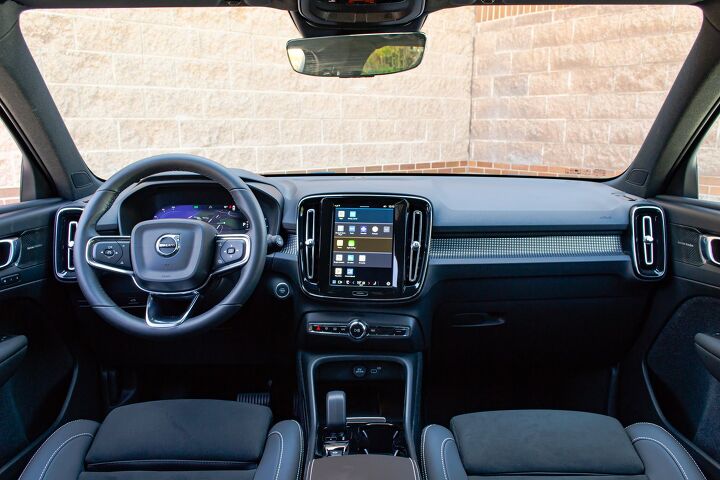






























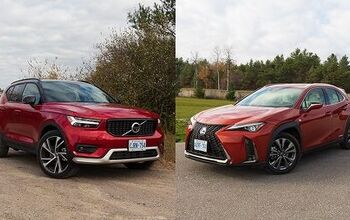
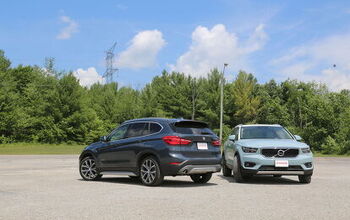

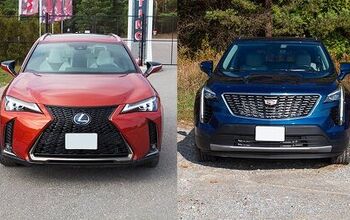
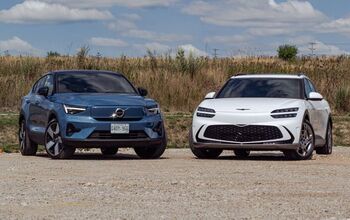

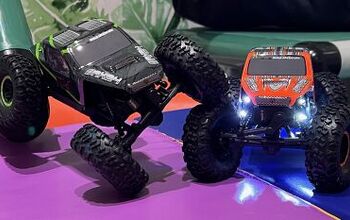


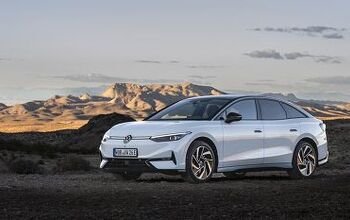

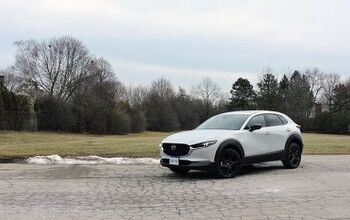
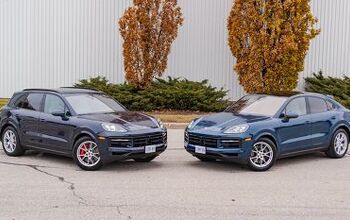
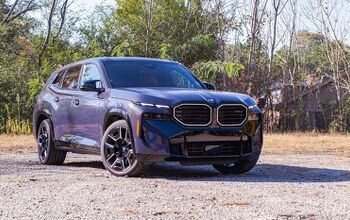

Comments
Join the conversation
I looking for 2023 Lexus UX FWD in white with the premium package. I do not want the AWD model
When will Lexus, Hyundai, Mercedes and other crap cars switch their taillights on? It is tragicomic to see them i.e. in morning fog from back at last moment.